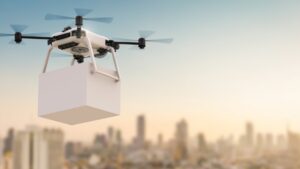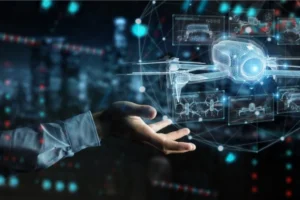Future of drone technology and its applications
Drones, also known as unmanned aerial vehicles (UAVs), have become increasingly popular in recent years. These flying machines are being used for a wide range of applications, from aerial photography and surveillance to package delivery and disaster relief. As drone technology continues to advance, we can expect to see even more innovative uses for these devices in the future.
One of the most significant advancements in drone technology is the improvement in their ability to navigate autonomously. Autonomous drones can fly themselves without any input from a human operator, making them ideal for tasks such as surveying large areas or inspecting hard-to-reach places. With the development of artificial intelligence (AI) and machine learning algorithms, drones can learn and adapt to their surroundings, making them even more effective at completing complex tasks.

Another area of development in drone technology is the use of swarm technology. A swarm of drones can work together to complete tasks more efficiently than a single drone. Swarm drones can be used for tasks such as search and rescue, firefighting, and even crop monitoring. The drones can communicate with each other and share data, making them more effective at completing tasks and increasing their range of capabilities.
Drones have already found widespread use in agriculture, where they are used for crop monitoring and management. Drones can capture high-resolution images of crops, which can be used to identify areas of stress, pest damage, or nutrient deficiencies. This data can be used to optimize irrigation, fertilization, and pest management, leading to increased crop yields and reduced costs. As drone technology continues to improve, we can expect to see even more advanced uses of drones in agriculture, such as precision spraying and planting.
Drones are also being used for environmental monitoring and conservation. Drones can be used to monitor wildlife populations, track deforestation, and identify areas at risk of natural disasters such as landslides and floods. In addition, drones can be used to map and monitor marine habitats and wildlife, such as whales and dolphins. By providing real-time data on environmental conditions, drones can help researchers and conservationists make more informed decisions about how to protect and preserve our planet.
One of the most exciting areas of development in drone technology is the use of drones for package delivery. Companies such as Amazon and Google are already experimenting with drone delivery services, which could revolutionize the way we receive goods. Drone delivery has the potential to reduce delivery times and costs, particularly in areas with limited road access. However, there are still several regulatory and technical hurdles that need to be overcome before drone delivery becomes a widespread reality.
Drones are also being used for disaster relief and emergency response. In the aftermath of natural disasters such as earthquakes, hurricanes, and floods, drones can be used to survey damage and identify areas in need of assistance. Drones can be used to deliver medical supplies, food, and water to remote areas that are difficult to access by traditional means. Drones can also be used to search for survivors in the rubble of collapsed buildings or to detect gas leaks and other hazards.

Another area where drones have the potential to make a significant impact is in the construction industry. Drones can be used to survey construction sites, monitor progress, and create 3D models of buildings. This data can be used to identify potential safety hazards, optimize construction schedules, and reduce costs. In addition, drones can be used to inspect buildings and other structures for damage, reducing the need for workers to climb scaffolding or use other dangerous methods.
The future of drone technology is undoubtedly exciting. As drones become more advanced and capable, we can expect to see even more innovative applications of this technology. However, there are also several challenges that need to be addressed. One of the most significant challenges is the regulatory environment. As drones become more widespread, regulations will need to be developed to ensure the safe and responsible use of these devices. This includes regulations around flight paths, altitude limits, and privacy concerns.
Another challenge is the development of reliable and sustainable power sources for drones. The limited flight time of drones is a significant limitation that needs to be addressed to make them more effective for certain applications. The development of new battery technology or alternative power sources such as solar or hydrogen fuel cells could help to overcome this limitation.
Additionally, there are concerns around the security of drones. As drones become more advanced, they also become more susceptible to hacking and other forms of cyber attacks. This could pose a significant threat, particularly if drones are being used for sensitive applications such as military operations or surveillance.
Despite these challenges, the potential applications of drone technology are vast and varied. Drones have the potential to revolutionize industries from agriculture to construction, and to improve the way we respond to emergencies and protect the environment. As drone technology continues to advance, we can expect to see even more innovative applications of this technology in the years to come.
In conclusion, the future of drone technology is bright. With advancements in areas such as autonomous navigation, swarm technology, and AI, drones are becoming more capable and effective than ever before. From package delivery and environmental monitoring to disaster relief and construction, drones are already being used in a wide range of applications. While there are several challenges that need to be addressed, the potential benefits of drone technology are vast and exciting. As we continue to explore the possibilities of this technology, we can expect to see even more innovative uses of drones in the future.









